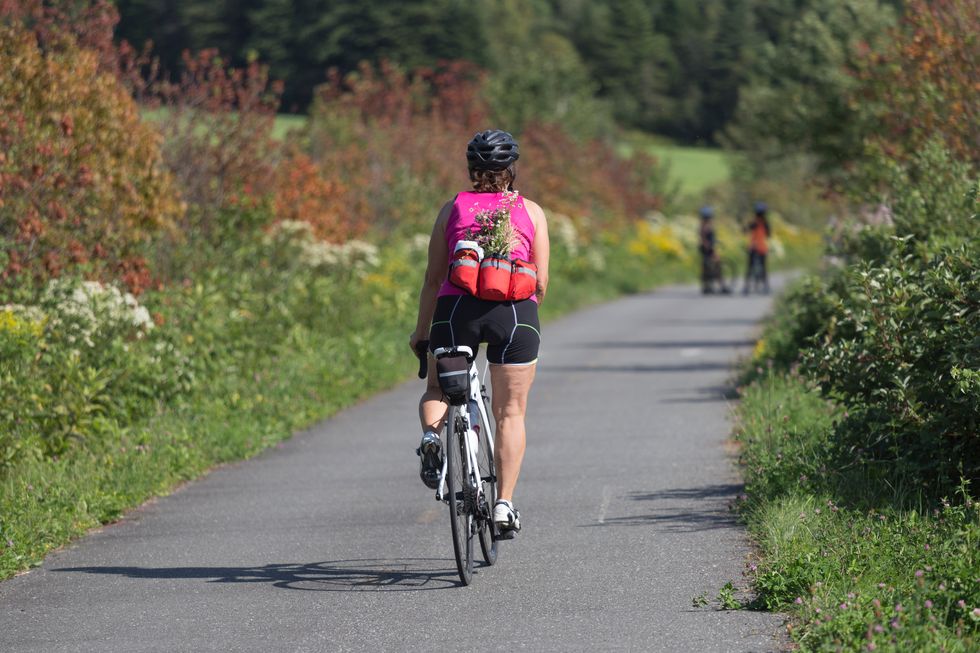
The Solution for Aching Knees
Osteoarthritis causes aching knees for many women in midlife. That doesn't mean you should give up exercising. Find out what you can do.
Jul 10, 2017
Dec 14, 2021
Menopause & Aging Well
Sheryl Kraft, a freelance writer and breast cancer survivor, was born in Long Beach, New York. She currently lives in Connecticut with her husband Alan and dog Chloe, where her nest is empty of her two sons Jonathan. Sheryl writes articles and essays on breast cancer and contributes to a variety of publications and websites where she writes on general health and wellness issues. She earned her MFA in writing from Sarah Lawrence College in 2005.
Full BioLearn about our editorial policies

This article has been archived. We will no longer be updating it. For our most up-to-date information, please visit our arthritis information here.
Chances are by now your midlife knees don't feel the same as they did 10 or 20 years ago—or even last year.
I know mine don't.
When I was around 40, I was suddenly stricken with sharp pain in my left knee. It happened in Paris, while descending the subway steps. I was with my husband—my very first trip abroad—and we had been doing a lot of walking. I assumed I must have twisted my knee somewhere along the way, and that's why my knee was acting up.
The pain eventually subsided, but my knee didn't feel quite right. I proceeded with the rest of my trip, a bit slower whenever I encountered stairs (especially on the way down).
Once back home, I visited a knee specialist, who, after examining my X-rays, told me this: "If you were older, I'd call this arthritis, but for now, we'll call it cartilage loss."
Well, I'm older now. And it's time to admit it: I have arthritis in my knee.
Thirty million other U.S. adults suffer some form of osteoarthritis (OA), according to the Centers for Disease Control and Prevention. Caused by damage or the breakdown of cartilage between bones, OA affects more women than men and is a factor of joint injury or overuse, genetics and, of course, age.
Pain while walking down steps is a common sign of knee osteoarthritis. So is stiffness, aching, swelling and a decreased range of motion. But having OA doesn't mean you need to be sedentary, even though it might feel that way.
I'm still active (when it comes to exercise I'm kind of stubborn and relentless), but I've (sadly) had to give up sports like tennis and running and activities that involve side-to-side movements, sudden stops and starts, and squatting.
But I can still bike, walk, swim and use the elliptical at the gym. Research supports exercise for OA; it's considered the most effective non-drug treatment for reducing pain and improving movement.
Other Treatments for Knee Arthritis
Injections
Euflexxa, Synvisc and Monvisc are common brand names for a prescription-only injection therapy made from a gel-like hyaluronic acid derivative, which lubricates the joint and acts as a shock absorber.
I recently received my first of three weekly injections. It was painful and a bit uncomfortable, but the pain subsided quickly once the injection was completed. I drove myself home with no problem and was cleared to exercise the next day. Though I don't yet feel any difference, I'm hopeful—I was told it could take up to six weeks after the last injection to begin feeling relief.
The injections are costly (fortunately my insurance covered some of the expense) and work for about two-thirds of patients. According to a recent study, they delayed the average time to a total knee replacement by 3.6 years, compared with those who did not receive injections (they had their knees replaced after an average of 114 days).
Injections with steroids is another common treatment. Although they can help reduce inflammation, they've been found to cause a greater loss of cartilage if used repeatedly.
Lifestyle and Other Approaches
Lose weight if you're overweight. Because extra weight puts pressure on the knee, the more you weigh the harder it will be to walk or climb stairs without knee pain. Each pound of excess weight puts about four extra pounds of pressure on your knees. If you're 10 pounds overweight, that amounts to 40 pounds of extra pressure!
You may also try over-the-counter pain relievers like acetaminophen (Tylenol and others) or nonsteroidal anti-inflammatory drugs (Advil or Motrin) or naproxen (Aleve).
Physical therapy can help improve balance, strength and joint alignment. Because the majority of people with knee OA have weak quadriceps, strengthening this area can help stabilize and cushion your joint. Improving the strength and flexibility of your hips and hamstrings can help, too.
Other approaches get mixed reviews, but can prove effective for some. These include acupuncture, water therapy, stretching, joint alignment devices (knee and foot braces and shoe inserts/orthotics), yoga, and over-the-counter rubs, gels and patches.